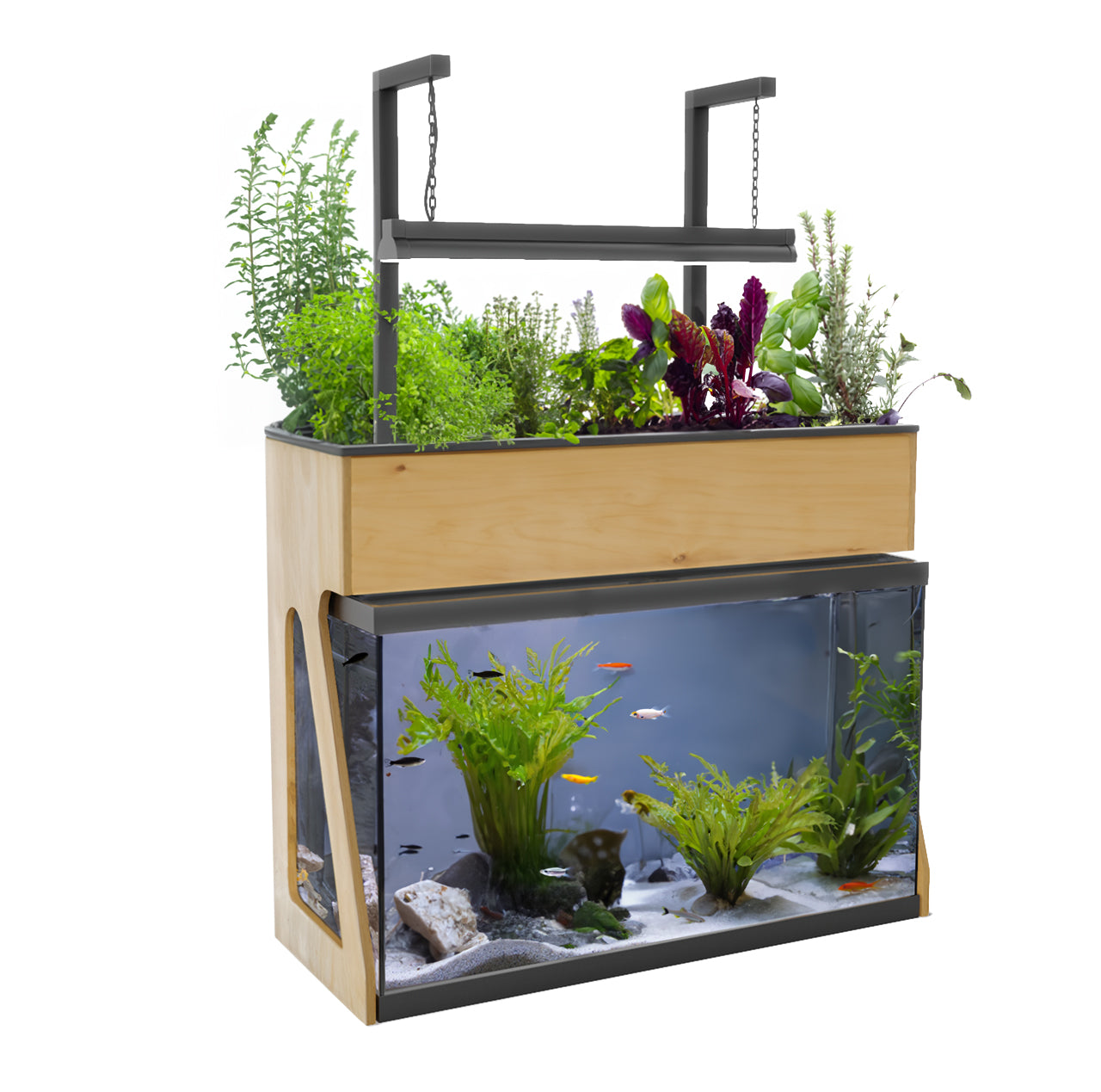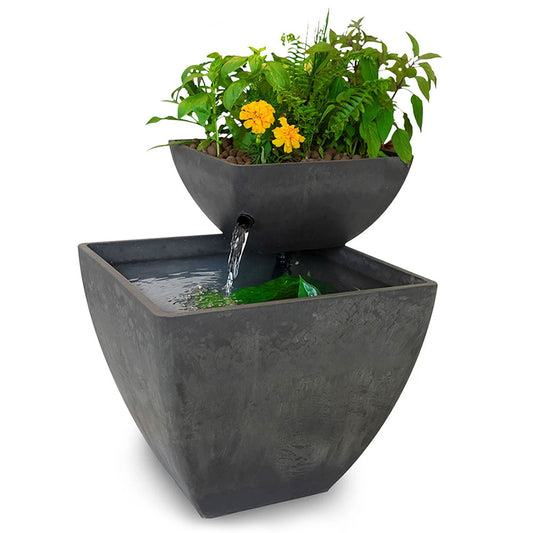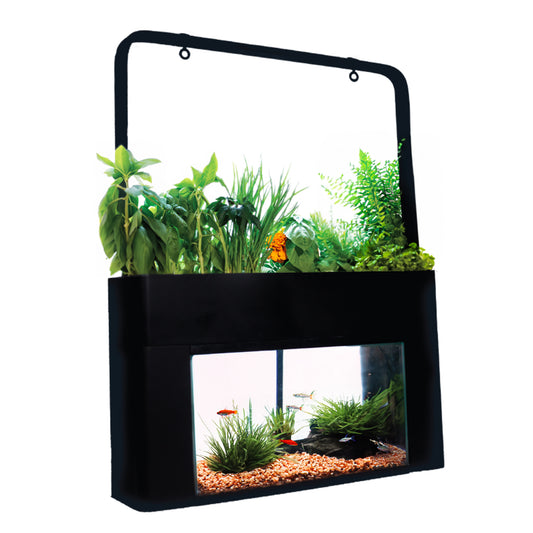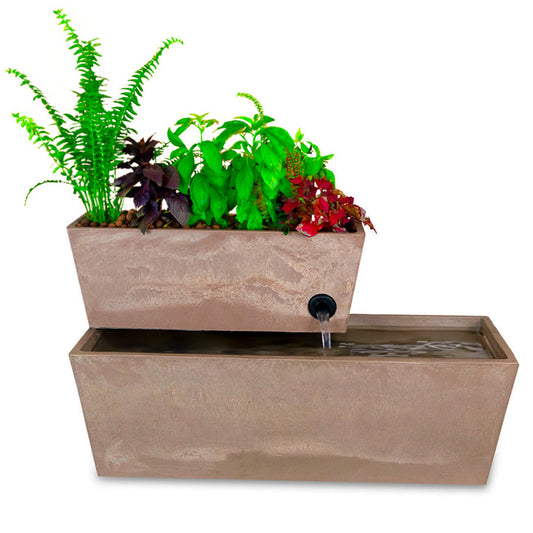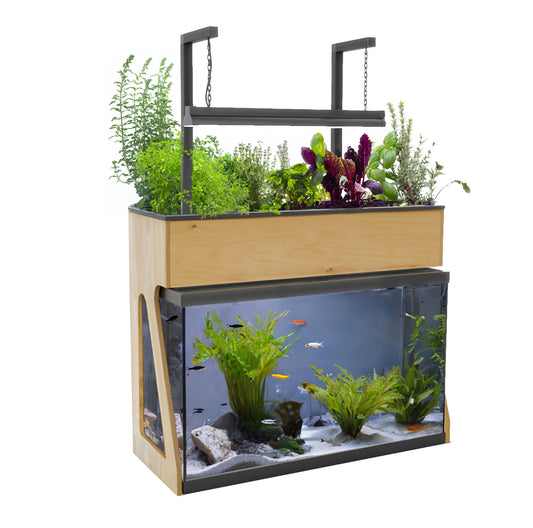Are you fascinated by the idea of a miniature ecosystem in your home, where fish and plants support each other in a cycle of sustainable food production? Aquaponics makes this possible! By combining aquaculture (raising fish) and hydroponics (growing plants without soil), aquaponics creates a beautiful, efficient system that's surprisingly accessible to DIYers. Let's delve deeper into how you can create your own thriving aquaponics setup.
Understanding Aquaponics: Nature's Blueprint for Efficiency
Aquaponics elegantly harnesses natural processes. Fish produce waste containing ammonia, which bacteria convert into plant-usable nutrients. The plants absorb these nutrients, cleaning the water for the fish. This closed-loop system reduces water waste, creates a natural fertilizer source, and fosters a fascinating, balanced ecosystem right in your own space.
Gathering Your Aquaponics Essentials
Here's a breakdown of the core components of an aquaponics system:
- Fish Tank: This will be your fish's home. Choose a size and material based on the types of fish desired and your available space. Consider factors like insulation and light exposure.
- Grow Bed: This houses your plants and beneficial bacteria. Options range from repurposed containers (ensure they're food-safe) to specialized grow beds or kits designed for aquaponics.
- Water Pump: This vital component keeps water circulating. Power and flow rate depend on the size of your system.
- Plumbing: Pipes, fittings, and possibly valves connect your tank, grow bed, and pump. Kits can simplify this, or you can source individual components for customization.
- Grow Media: A substrate like clay pebbles or expanded shale fills the grow bed. It provides support for plant roots and a vast surface area for beneficial bacteria to colonize.
- Fish: Freshwater species like tilapia, goldfish, koi, and catfish are common in aquaponics. Research carefully to ensure they suit your climate, setup size, and desired end product.
- Plants: Leafy greens, herbs, and some fruiting vegetables (like dwarf tomatoes and peppers) are typical choices. Ensure compatibility with your system and fish species.
- Water Testing Kit: This is essential for monitoring pH, ammonia, nitrite, and nitrate levels, ensuring a healthy environment for both fish and plants.
Building Your DIY Aquaponics System
- Choose Your Setup: Methods like deep water culture (plants float on rafts), nutrient film technique (shallow nutrient flow), and media-based beds are popular. Consider your space, desired plants, and technical needs when deciding.
- Assemble Components: Set up your tank and grow bed. Install the pump, ensuring secure placement, and connect the plumbing, carefully checking for leaks.
- Add Grow Media: Wash your media before adding it. A biofilter section (a dedicated area for bacteria) can improve efficiency.
- Cycle Your System: You must establish a healthy bacteria colony before adding fish. This 'cycling' process involves adding ammonia and monitoring its conversion to nitrite and then nitrate.
- Introduce Fish: Once cycling is complete, add fish gradually. Start with a small number and monitor water parameters closely.
- Plant Your Garden: It's time to plant! Stagger planting to avoid overwhelming the biofilter, and match plants to your system (some do better in deeper water, for instance).
Nurturing Your Aquaponics Ecosystem
Maintain your system for success:
- Water Quality: Test regularly and adjust as needed. Small water changes may be more frequent than larger ones, depending on your system.
- Maintenance: Clean filters, remove fish waste, and prune plants. Top up water due to evaporation.
- Observation: Watch for signs of distress in plants or fish. This helps you catch problems early.
- Enjoy the Rewards: Harvest fresh food and admire the thriving ecosystem you've built!
The Wonders of Aquaponics
Aquaponics is more than just food:
- Sustainability: Drastically reduce water and fertilizer use compared to traditional agriculture.
- Education: A fantastic tool for teaching biology, chemistry, ecology, and food systems.
- Beauty and Relaxation: Create a vibrant, living feature for your home or classroom.
Building a DIY aquaponics system is a rewarding endeavor. The process involves learning and adjusting, but the foundational principles are within anyone's reach. Research, experiment, enjoy...and marvel at the sustainable, fascinating world you've brought to life.
